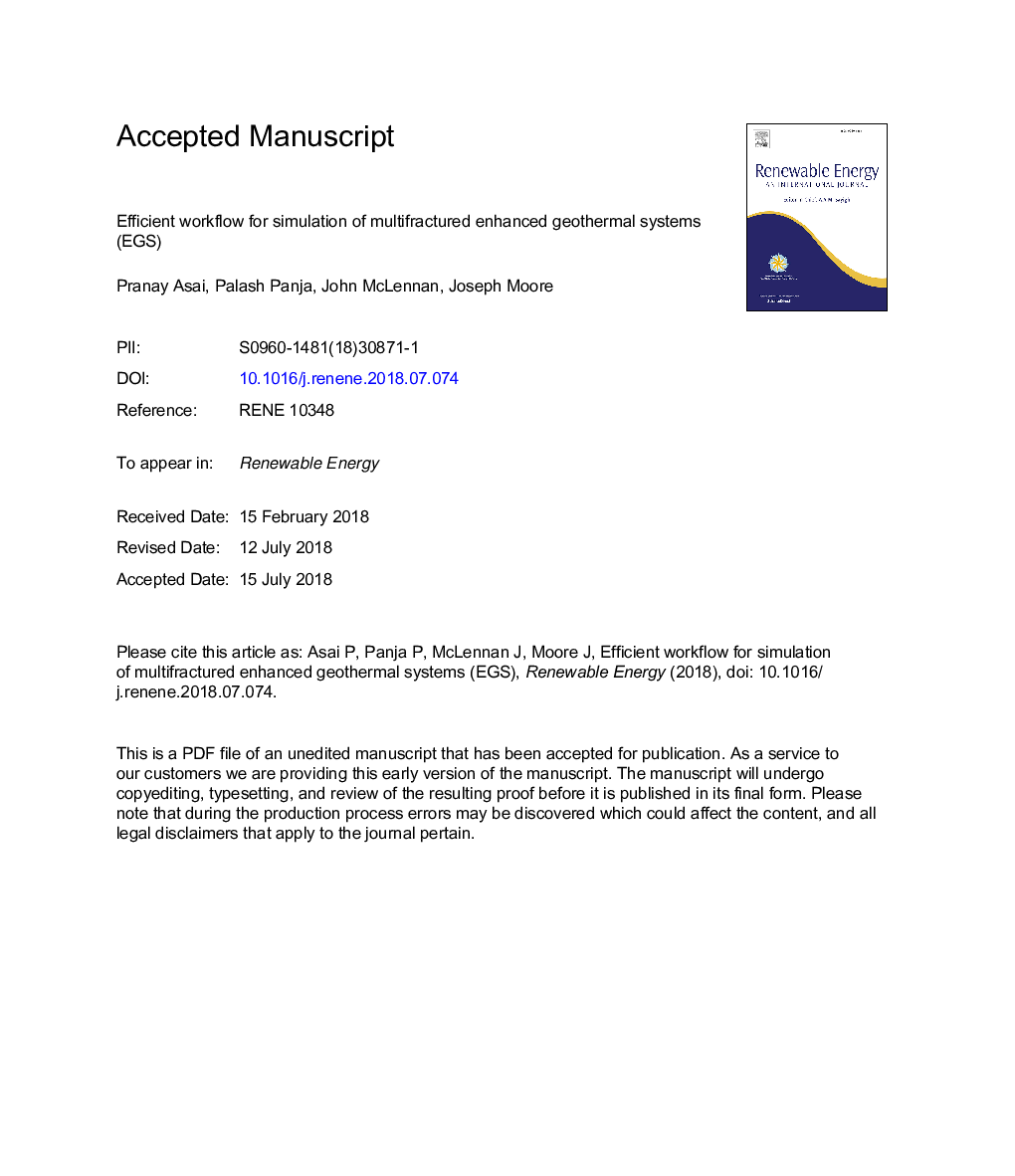| کد مقاله | کد نشریه | سال انتشار | مقاله انگلیسی | نسخه تمام متن |
|---|---|---|---|---|
| 6763683 | 1431571 | 2019 | 30 صفحه PDF | دانلود رایگان |
عنوان انگلیسی مقاله ISI
Efficient workflow for simulation of multifractured enhanced geothermal systems (EGS)
دانلود مقاله + سفارش ترجمه
دانلود مقاله ISI انگلیسی
رایگان برای ایرانیان
موضوعات مرتبط
مهندسی و علوم پایه
مهندسی انرژی
انرژی های تجدید پذیر، توسعه پایدار و محیط زیست
پیش نمایش صفحه اول مقاله

چکیده انگلیسی
The increasing demand for clean energy with minimum environmental impact motivates development of geothermal energy. Simulating a geothermal reservoir is complex and time consuming, mainly because of the systems spatial and temporal non-isothermal nature and the enormous size of the domain/reservoir. Simulations become even more complex when representing Enhanced Geothermal Systems (EGS), where wells in a hot, low permeability reservoir are interconnected by hydraulic fracturing to provide pathways for injection of cold water, in situ heating, and consequent production of hot water. In this study, various issues related to simulation of enhanced geothermal systems are investigated and practical solutions are proposed. A comprehensive study was conducted to show the effect of different grid systems on predictions of the transient temperature of the produced water. It is shown that the performance of an EGS is affected by the transmissivity (product of permeability and width of the fracture) of the fracture more so than by the values of permeability and width of the fracture considered individually. A simplified model (downscaled model) reduces the simulation times significantly (by 1.5-14.5 times) without compromising the accuracy of the results. In the proposed model, only two simulations - capturing small portions of the top and bottom of a reservoir with two active hydraulic fractures is used to evaluate performance of the entire reservoir. The proposed model is proved to be robust when exposed to different scenarios created by varying the inclination of the wells with respect to horizontal, spacing of the hydraulic factures, and spacing between the injection and producing wells. Value of R2 close to unity (0.96-1.0) and smaller value of MAPE (Mean Absolute Percentage Error), less than 3% in comparison to the entire reservoir simulations, indicate the utility of proposed model.
ناشر
Database: Elsevier - ScienceDirect (ساینس دایرکت)
Journal: Renewable Energy - Volume 131, February 2019, Pages 763-777
Journal: Renewable Energy - Volume 131, February 2019, Pages 763-777
نویسندگان
Pranay Asai, Palash Panja, John McLennan, Joseph Moore,